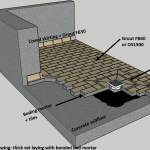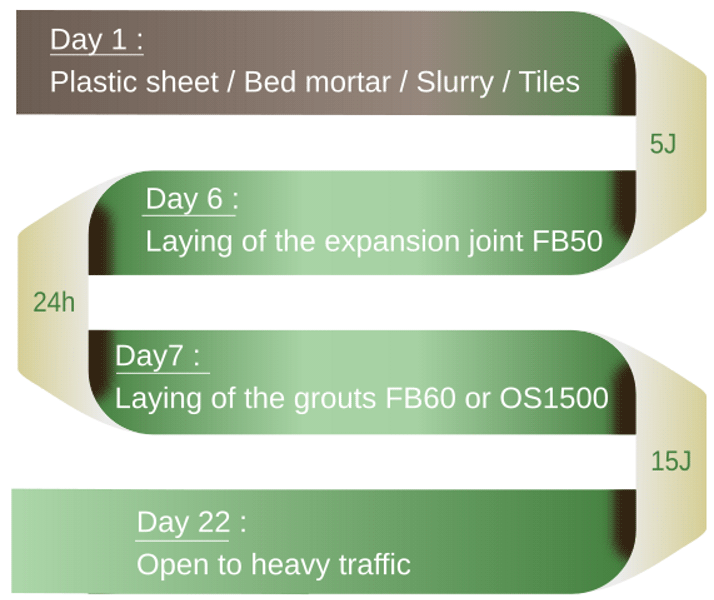Thickset laying method
Description
Good to know
A Thickset laying( with bonded or floating bed mortar) has a lower chemical resistance than a thinset laying in a full resin bath. Also, It takes much longer for the room to be reopened to heavy traffic after laying than with a thinset layingn in a full resin bath.
PREPARATION - CHECKING THE SUBFLOOR
The flatness tolerances of the substrate are less than with a glued installation. It is rarely necessary to level the surface. Thus, at this stage, only a verification of the support is necessary (moisture content/drying time, resistance to tearing…).
STEPS FOR THE REALIZATION OF A THICK SET TILE FLOORING WITH BONDED BED MORTAR
This type of laying is only suitable for surfaces where the construction deformation is minimal, i.e. where the contraction of the concrete is insignificant, such as: old floors with no risk of contraction/deformation, domestic floors or old industrial floors built directly on the ground. It is not recommended for new floors.
For more details on each of our products, go to Our Products.
STEPS FOR THE REALIZATION OF A THICK SET TILE FLOORING WITH FLOATING BED MORTAR
The thick set laying with floating bed mortar is recommended for floors exposed to temperature changes, risks of subfloor shrinkage and risks of structural deformation, such as industrial floors or upper floor areas. On slabs, thick set laying with floating bed mortar can be carried out approximately three weeks (in new construction) after the subfloor has been laid, as with a thick set laying with bonded bed mortar.
This type of thick set laying is the most frequently used today.
For more details on each of our products, go to Our Products.
SPECIFIC POINTS
Special care must be taken when treating the specific points (connection with a drains or gutters, pipe passing through the floor, floor/wall connection, overhangs, etc.). Contact your sales representative for more information – page Contact.




